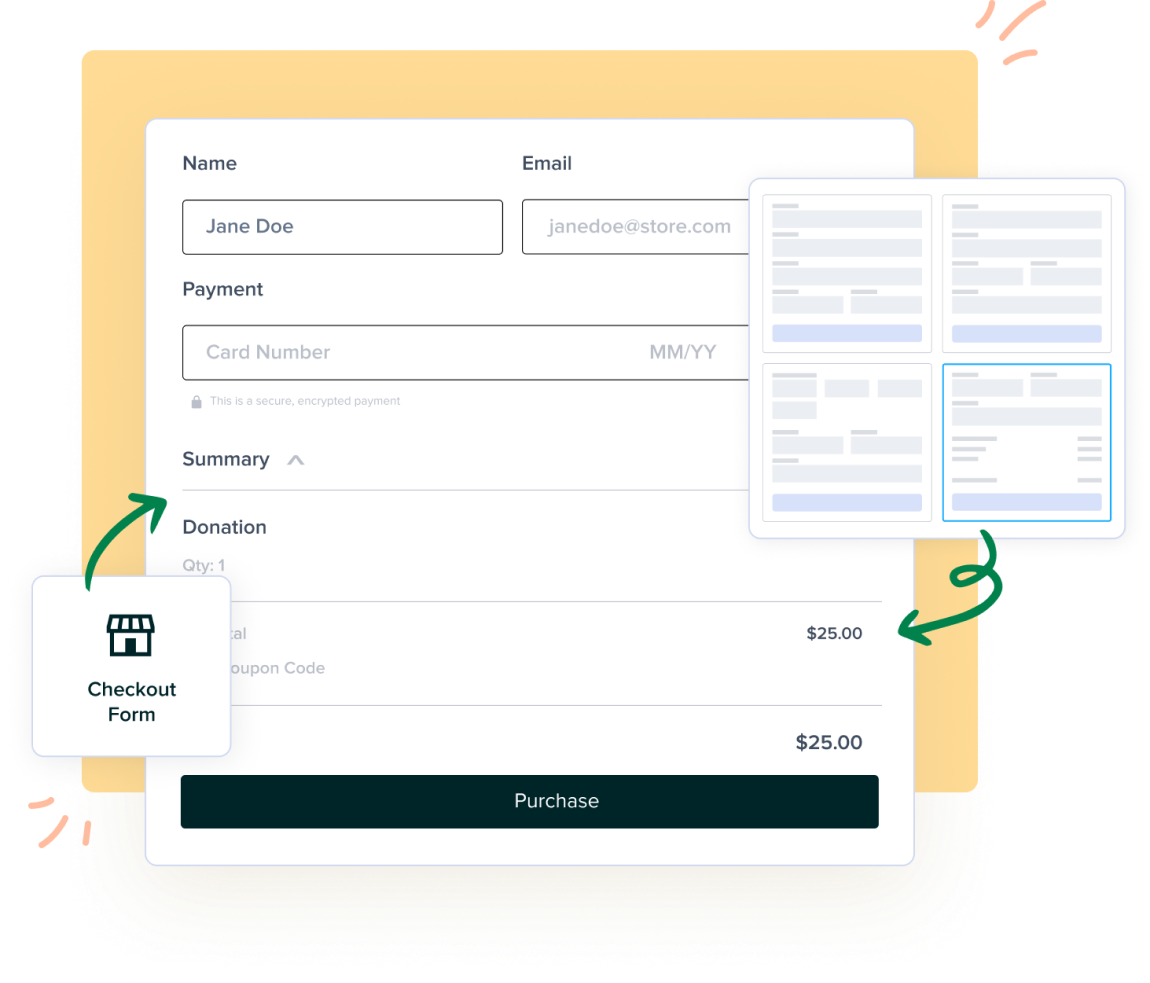
Let’s be honest—there’s no shortage of WordPress eCommerce plugins out there. We’ve got heavyweights like WooCommerce, Shopify (through integrations), and BigCommerce. Yet, along comes SureCart, a fairly new player on the field, claiming to make eCommerce simpler and faster for everyone. But how does it actually stack up, and more importantly—is it the right fit for you?
In this review, we’ll dive deep into what SureCart has to offer, where it excels, and, of course, where it could still improve. Spoiler alert: SureCart isn’t for everyone, but it certainly has its strengths.
Pros and Cons of SureCart
Let’s start with the basics. SureCart, like every platform, has its strong suits and weak spots.
Pros:
- Flexible Pricing Options: Whether you’re a small business just getting started or a growing enterprise, SureCart has pricing tiers that can accommodate both ends of the spectrum. The free Launch Plan is especially appealing for new sellers, while paid plans offer even more scalability without breaking the bank.
- Multiple Product Types: From physical goods and digital downloads to subscription services and even consultations, SureCart provides numerous ways to sell and monetize your offerings. Their flexibility with payment options—instalments, partial payments, and trials—gives you a wide range of customer pricing models.
- No Additional Transaction Fees: This one’s a biggie. SureCart doesn’t take a cut of your sales, unlike Shopify, which has transaction fees unless you use their payment gateway.
- Headless eCommerce & No-Code Customization: Performance junkies, rejoice! SureCart offers headless eCommerce, meaning your site speed won’t tank. The no-code customization also makes it friendly for users who aren’t developers.
- GDPR & Tax Compliance: For those selling in Europe, compliance with GDPR and VAT is a breeze, with automatic tax calculations.
Cons:
- Limited Payment Gateways: As of now, SureCart only supports a handful of payment gateways, including Stripe, PayPal, and Mollie. This could be a dealbreaker for merchants outside the US, where payment options are more limited.
- No Bulk Editor for Products: For larger stores, the lack of a bulk product editor can make updates tedious. Every change needs to be done manually, product by product.
- Limited Marketing Integrations: If you’re used to Shopify’s vast app store or WooCommerce’s third-party integrations, you might feel a bit constrained here. SureCart lacks the full range of marketing tools you might need, especially for advertising and social media campaigns.
Who Should Use SureCart?
SureCart is best suited for digital-first businesses, service providers, and small-to-medium physical product sellers. If you’re a creator selling courses, a consultant offering services, or even an online retailer dealing with small item inventories—SureCart could be your jam.
For example, local grocery subscriptions or small eCommerce businesses in the fashion and jewelry space can find SureCart to be a lean, cost-effective solution.
But if you’re running a high-volume store with complex logistics or need POS integrations (which SureCart doesn’t offer yet), you might want to look elsewhere—cough Shopify Plus.
SureCart vs. The Competition
Let’s do a head-to-head comparison between SureCart and some industry giants:
| Features | SureCart (Launch Plan) | Shopify (Basic Plan) | BigCommerce (Standard Plan) | WooCommerce (Free + Plugins) |
|---|---|---|---|---|
| Monthly Cost | Free | $39 | $39 | Free + Hosting |
| Transaction Fees | 1.9% | 2% + 30¢ | Payment Gateway Fees | Payment Gateway Fees |
| Product Types | Physical, Digital, Subscription | Physical, Digital, Subscription | Physical, Digital, Subscription | Physical, Digital, Subscription |
| Custom Checkout | Yes (Highly Customizable) | Limited | Limited | Yes (With Plugins) |
| Payment Options | Limited Gateways (Stripe, PayPal) | Multiple Gateways | Multiple Gateways | Multiple Gateways |
| Abandoned Cart Recovery | 50 Emails/Month | Yes (Unlimited) | Yes (Unlimited) | Yes (With Plugins) |
| Integrations | Basic (Limited) | Advanced | Advanced | Varies (Based on Plugins) |
| POS System | No | Yes | Yes | Yes (With Plugins) |
| Multicurrency Support | No (Upcoming) | Yes | Yes | Yes (With Plugins) |
A Deep Dive Into SureCart’s Features
SureCart is no slouch when it comes to features, but how well do these perform in real-world scenarios?
1. Product Flexibility
With SureCart, you can sell almost anything—whether it’s physical goods, digital downloads, services, or even memberships. Where it stands out is the flexibility in pricing options. As you mentioned, you’ve got seven different ways to price your products. From partial payments and subscription models to “pay what you want” options, SureCart shines in offering dynamic pricing.

2. Checkout Process
The checkout process is smooth and customizable. You can build and tweak your checkout pages with a drag-and-drop editor, making the experience tailored to your brand. Also, SureCart allows for upsells and order bumps, which is crucial for increasing average order value.

3. Marketing and Automation
SureCart includes some marketing tools such as abandoned cart recovery and built-in automations. However, if you’re relying heavily on third-party marketing tools like Google Ads or Facebook Pixels, SureCart might feel a little limited in its integrations. But, SureTriggers (SureCart’s automation tool) offers some exciting possibilities for the future.
4. Subscription Management
Subscriptions are another highlight here, especially compared to WooCommerce where handling subscriptions can get tricky. SureCart handles everything from recurring payments to upgrades and downgrades with ease. Plus, you avoid the hefty fees that Stripe usually charges for managing subscriptions.
Pricing: Is SureCart Affordable?
SureCart offers three pricing plans: Launch (Free), Grow ($29/month), and Scale ($59/month). Each plan provides unlimited products, which is fantastic for scaling your store without worrying about hitting a cap. However, if you’re doing high volume, the transaction fees on the free plan (1.9%) can add up quickly.
For sellers processing less than $3,000/month, the free plan is hard to beat. But as your business grows, the Grow and Scale plans offer better value, with added perks like abandoned cart recovery and team accounts.
Where SureCart Can Improve
While SureCart is a promising eCommerce platform, there are a few areas where it could still improve:
- More Payment Gateway Options: Especially for international sellers, the limited gateway support can be a bottleneck. Stripe and PayPal might not be accessible or popular in some regions, limiting global expansion.
- No POS Integration: Businesses with physical retail outlets or events might find this a dealbreaker. As it stands, SureCart is very much an online-only solution.
- Multicurrency Support: This is another feature that international sellers are eagerly waiting for. While SureCart has promised it’s coming soon, it’s a critical limitation at present.
- Bulk Editing: If you’re running a store with hundreds of products, the lack of bulk editing tools could slow you down. Managing inventory or updating product information one by one isn’t efficient.
Final Verdict: Is SureCart Right for You?
So, is SureCart worth the hype? Yes, but it depends on your needs.
- If you’re a digital-first business selling online courses, subscriptions, or eBooks, SureCart is a fantastic solution. Its pricing options, flexibility, and ease of use make it a solid choice for creators and service-based businesses.
- For small-to-medium-sized retailers selling physical products, SureCart works well—especially if you’re looking for a lightweight eCommerce plugin that won’t slow down your website. However, if you manage a large inventory or need POS support, you might find SureCart limiting.
- For large, high-volume stores looking for established features, integrations, and scalability, WooCommerce or Shopify might still be the safer bet. SureCart is promising but still lacks the breadth of tools these giants offer.
Ultimately, SureCart is a solid platform with room to grow. It simplifies the eCommerce process, especially for WordPress users, and is continually evolving. But like all things in tech, its success will depend on how quickly it can add those missing features.
Choosing the right eCommerce platform is crucial for your business’s success. Whether you’re just starting out or looking to scale, it’s important to find the solution that fits your unique needs. If you’re unsure which platform is best for you—whether it’s SureCart, Shopify, WooCommerce, or another option—get in touch with Nade XP. Our team will help you navigate the options and make the right choice to grow your business. Reach out today to get started!
FAQs
Yes, SureCart is particularly well-suited for digital products and software. It offers license key management, validation, and activation API, making it ideal for software distribution. Additionally, SureCart supports automated billing for subscriptions and other recurring payments.
Yes, since SureCart runs on WordPress, you will need a reliable hosting provider. However, SureCart manages eCommerce-related processes on its servers, reducing the load on your WordPress site, so you won’t need to worry about performance issues typical of eCommerce-heavy sites.
Focus on organic traffic by investing in SEO, content marketing, and social media strategies. Leverage free tools and platforms for email marketing, create a referral program, and collaborate with influencers who align with your brand to drive traffic at a lower cost.
SureCart’s free plan includes essential features but charges a 1.9% transaction fee and has limits on abandoned cart recoveries and upsells. Paid plans start at $19/month. WooCommerce is free to start but requires paid plugins and hosting. Shopify offers a straightforward pricing model starting at $29/month, but with additional transaction fees unless using Shopify Payments.
SureCart is an excellent choice if you are selling digital products, memberships, or subscriptions, thanks to its automation features and ease of use. However, it’s fairly new compared to WooCommerce and Shopify, so if you need extensive marketing integrations or POS support, you might consider Shopify or WooCommerce.
Yes, SureCart is an excellent option for digital products and services. It offers flexibility with various pricing models, such as subscriptions, pay-what-you-want options, trial period purchases, and installment plans. If you’re selling digital goods like courses, consultations, or downloadable content, SureCart provides a seamless checkout process and saves on recurring fees like those charged by Stripe.
SureCart is a WordPress plugin designed for digital products and subscriptions, offering features like subscription billing automation and license key management. WooCommerce is a versatile, open-source plugin also for WordPress, ideal for physical products with a wide range of plugins but requires more setup. Shopify is an all-in-one platform with robust marketing integrations and ease of use but comes with higher fees and limited customization compared to WordPress-based solutions.
SureCart’s primary limitations include its limited selection of payment gateways and lack of POS system integration. Additionally, multicurrency support is not yet available, which could be an issue for international sellers. While the platform is great for getting started, more advanced eCommerce stores might find the lack of features like bulk editing for physical products and limited marketing integrations to be restrictive.
Shopify charges a monthly fee and transaction fees, while WooCommerce is free but requires hosting, domain, and additional plugin expenses. SureCart runs on WordPress and charges based on subscription plans with additional fees for higher volume or advanced features. Each platform’s cost will vary depending on store size, sales volume, and specific needs.
SureCart’s free plan limits you to 50 abandoned cart recoveries per month, 1 order bump, and 1 one-click upsell. Additionally, there is a 1.9% transaction fee on the free plan, which may add up depending on your sales volume.
SureCart is ideal for businesses selling digital goods, subscriptions, or services like consultations. It’s a great fit for small businesses, digital content creators, and service-based businesses. However, if you are a larger business needing advanced features, like POS systems, extensive payment gateway options, and multicurrency support, other platforms like Shopify or WooCommerce might be a better choice.











